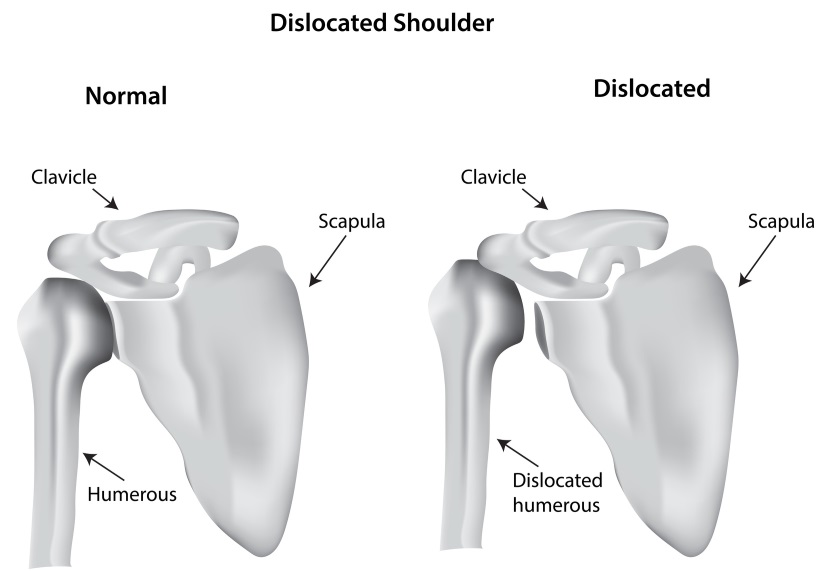Shoulder Dislocation
What is a dislocated shoulder?
A shoulder dislocation occurs when the round ball at the top of the upper arm bone, or humerus, leaves the socket in the shoulder blade, or scapula. That means the ball and socket bones of the shoulder are separated, with the ball of the humerus out of position.
Tissues that hold the bones together – including muscles, tendons that connect muscles to bones and ligaments that join the shoulder bone to the shoulder blade – are also sometimes injured. In addition, tearing of cartilage, a rubbery tissue that covers and protects the ends of bones, is possible.
A partially dislocated shoulder, or shoulder subluxation, means that only part of the upper arm bone is out of socket.

Why is the shoulder most likely to become dislocated?
The shoulder joint – a ball-in-socket mechanism, with the round top of the arm bone fitting into a groove in the shoulder blade – is the most mobile joint in the body. It can turn in several directions. Yet that mobility can leave the shoulder unstable, even though it’s anchored by muscles, tendons and ligaments. Of all the joints in the body, the shoulder is the most likely to become dislocated.
What are the symptoms of a dislocated shoulder?
Symptoms of a dislocated shoulder include:
- Extreme pain and/or weakness
- Swelling
- Bruising or redness
- Muscle spasms
- Numbness, tingling or weakness in the arm, hand or fingers
- Immobility of the arm, or difficulty moving it
- Shoulder visibly out of place

